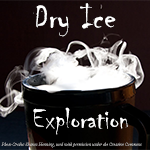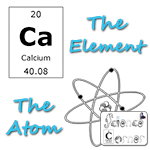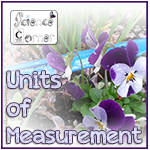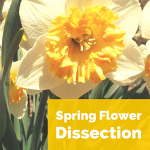Dry ice is one of those materials that can induce hours of science fun for your students. It appears to boil in room temperature water, sending out billows of white, wispy smoke. In today's Science Corner, I'm sharing a few activities that you can use to explore the science surrounding this amazing material. The Science of Dry Ice Dry ice is frozen carbon dioxide, the same chemical that can … [Read more...]
Science Corner: All About Experiment Variables
There are three main types of experiment variables that our students must be aware of, especially when approaching the science fair project. They are the independent variable, the dependent variable and the controlled variable. In today's science corner we are going to look closer at each of these variables. The Independent Experiment Variables The independent experiment variable is the … [Read more...]
Science Corner: The Element and Atom
What is an element? What is an atom? How do an element and atom differ? Today I'm getting a bit technical as I share about these two essential concepts in chemistry. The Element: Elements are a substances made up of one type of atom that cannot be broken down by chemical reaction to form a simpler substance. In other words, they are a type of matter which cannot be broken down into two or … [Read more...]
Science Corner: The Periodic Table
The periodic table visually shows the elements that make up everything we see around us. It is a key concept in chemistry which needs to be taught to our students. I prefer to introduce the idea of the periodic table in the elementary years. Then, teach the relationships and categories of the periodic table during the middle school years. That way, the students go into high school chemistry … [Read more...]
Homeschool Science Corner: The Importance of Units of Measurement
I am a bit of a stickler on units of measurement thanks to my high school chemistry teacher. She always told us that a number in chemistry meant nothing without its units, which is so true. After all, if I say that I need 2 of sugar for a recipe, do you know if I mean 2 tablespoons, 2 grams, 2 cups or 2 kilos? That's why from the very first time I introduce measurements to my students I always … [Read more...]
Science Corner: Spring Flower Dissection
Spring is a exceptional time to take a closer look at the structure of a flower. Many of the typical spring blooms, such as lilies, tulips and daffodils, have clearly seen elements, which makes them excellent specimens for your students to study the structure of a flower. One of the best was to do this is through a flower dissection, but how does one perform such a dissection? Step by Step … [Read more...]
 Sign up below to receive weekly tips & tools for homeschool science and we'll send you a FREE copy of
Sign up below to receive weekly tips & tools for homeschool science and we'll send you a FREE copy of 




